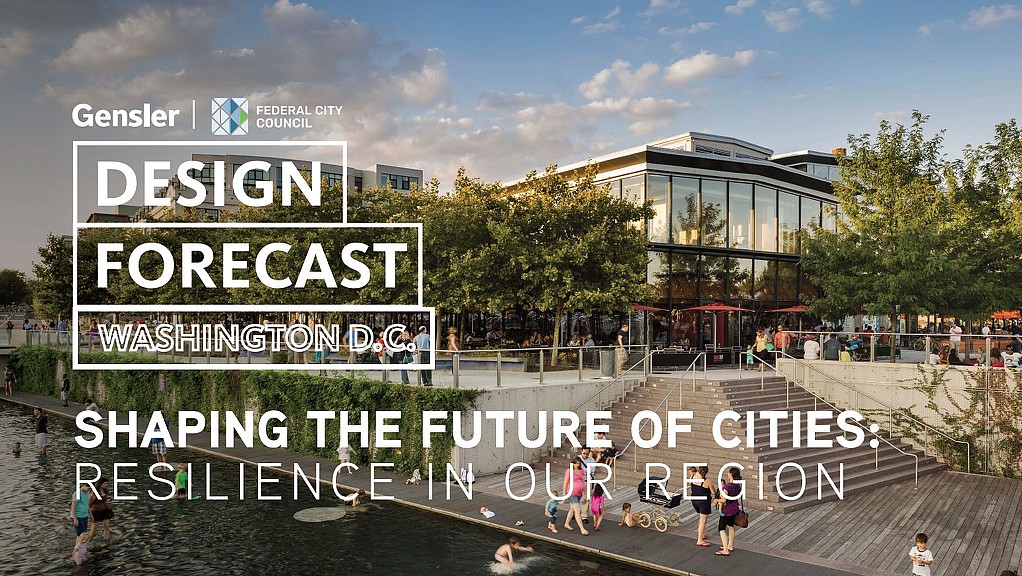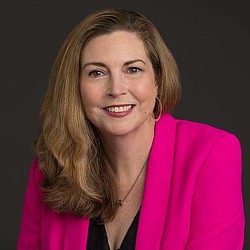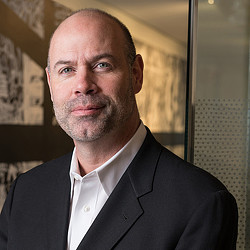Design Forecast Washington, D.C.: Resilience in Our Region
By Theresa Sheils and Francisco Gonzalez
Editor’s note: This post is part of Gensler’s Design Forecast Local, a series of hyper local conversations with our clients about the topics that matter most in our cities.
On Jan. 14, 2020, Gensler’s Washington, D.C. office, in partnership with the Federal City Council, hosted "Shaping the Future of Cities: Resilience in Our Region," a hyperlocal conversation focused on what the resilience challenge means for the Washington, D.C. community. The event featured Kevin Bush, the District’s first Chief Resilience Officer, who shared an overview of Resilient DC, a citywide strategy to thrive in the face of change. Following the presentation, Bush moderated a panel discussion featuring Kate Johnson, branch chief of the D.C. Department of Energy & Environment, Stephanie Gidigbi, director of Policy & Partnerships at the Natural Resources Defense Council, and Uwe Brandes, professor of the practice, Urban & Regional Planning at Georgetown University.
Focusing on three main drivers of change in our region (population growth, climate change, and technological disruption), the panelists discussed possible resilience solutions, including local and federal legislation and public-private partnerships.
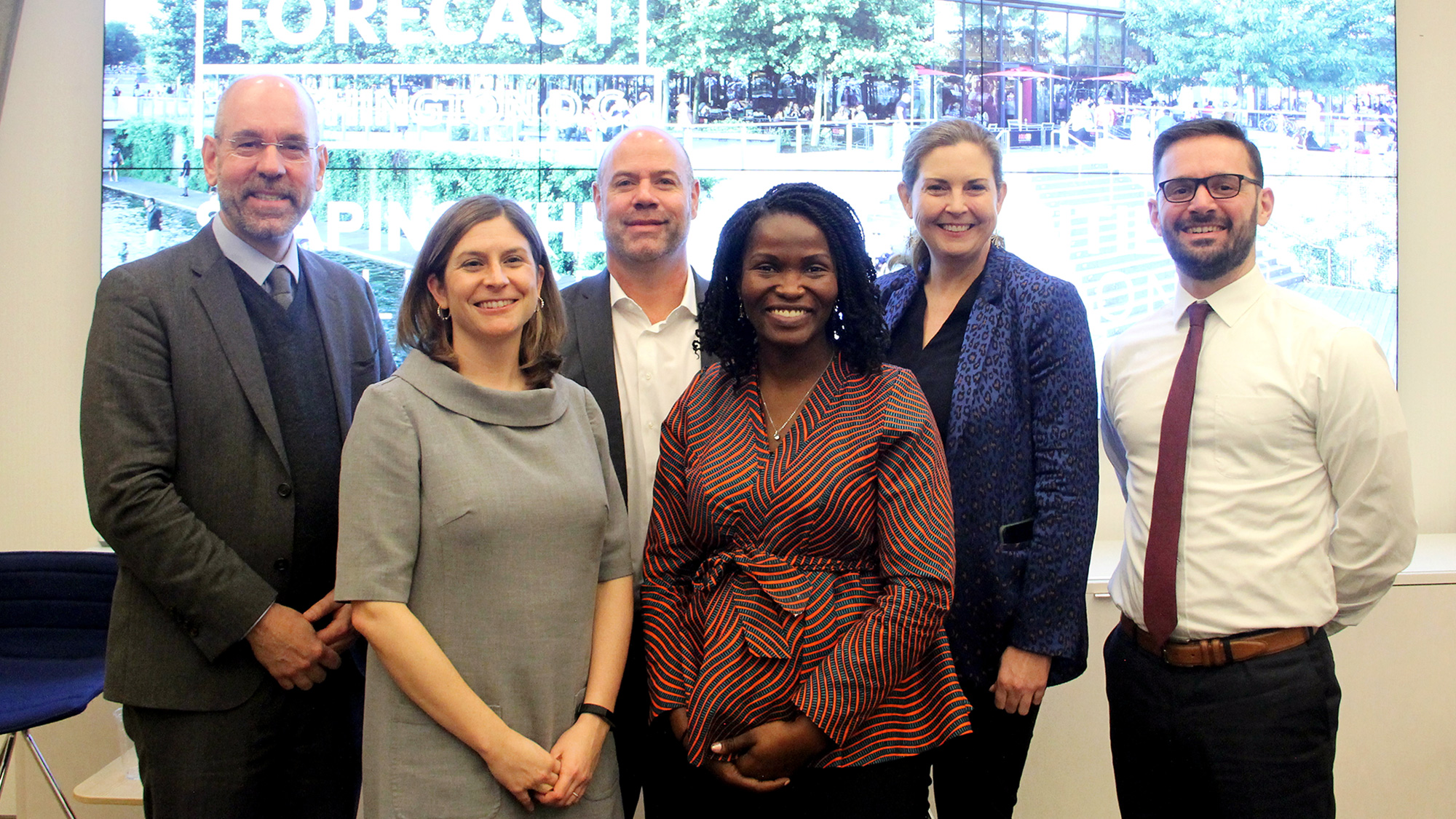
We have to define what we mean by resilience.
The measure of a city’s resilience can be broken down into how it can respond to two things: acute shocks and chronic stressors. Acute shocks are things like natural disasters or, in the case of Washington, D.C., unexpected economic crises like a government shutdown. Chronic stressors, such as affordable housing shortages and inefficient public transit systems, have longer time horizons; they’re the challenges that face cities every day for years at a time.
No one industry or sector can solve resilience issues by itself.Resilience is a challenge that touches everyone in our region and will require action from many industries at the same time. No sector or industry can solve the problem by itself. Bush outlined the basis for the Resilient DC Initiative, a strategy with a bold vision: to be climate resilient and carbon neutral by 2050. It aims to address legacies of structural and institutional racism, the unique climate challenges Washington, D.C. faces because of its geography, the impacts of automation on the workforce, and the threat of cyber-attacks, among other issues.
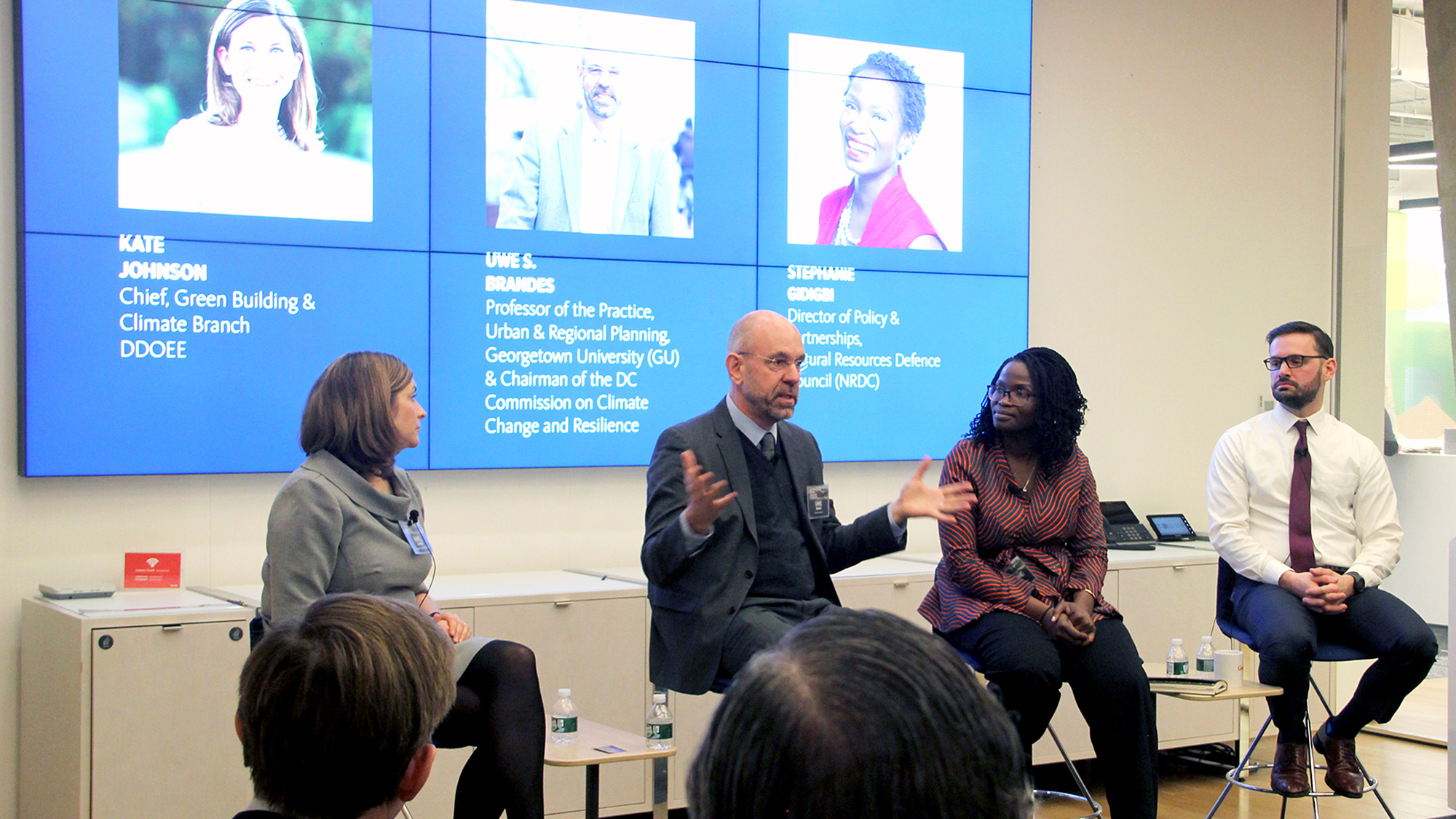
In D.C., buildings contribute to 3/4 of our greenhouse gas emissions. “A lot of the buildings that are here today are still going to be here in 2050, so we can’t just think about new buildings,” Johnson said. “We also have to think about our existing buildings.” In addition to the role of repositioning or renovating existing buildings in reducing emissions, she underscored the significance of D.C.’s Metro system to meeting climate change goals. When it comes to climate action, it is critical to act regionally. Even in the absence of federal leadership, states can work together to advance climate change policies and programs.
As we work to address the climate crisis, the intersectionality of these issues must be top of mind. The negative impacts of climate change disproportionately fall on communities that are already disadvantaged, magnifying their challenges. Brandes explained how the unusually high levels of collaboration between the public sector and the private sector in Washington, D.C. can be an asset. “I think we need new alliances between small businesses and bigger businesses, people who really have the resources to have a dedicated sustainability director on their staff and those that don't,” he said. “We need to grow our way out of these problems. We certainly are not going to shrink our way out of these problems.”
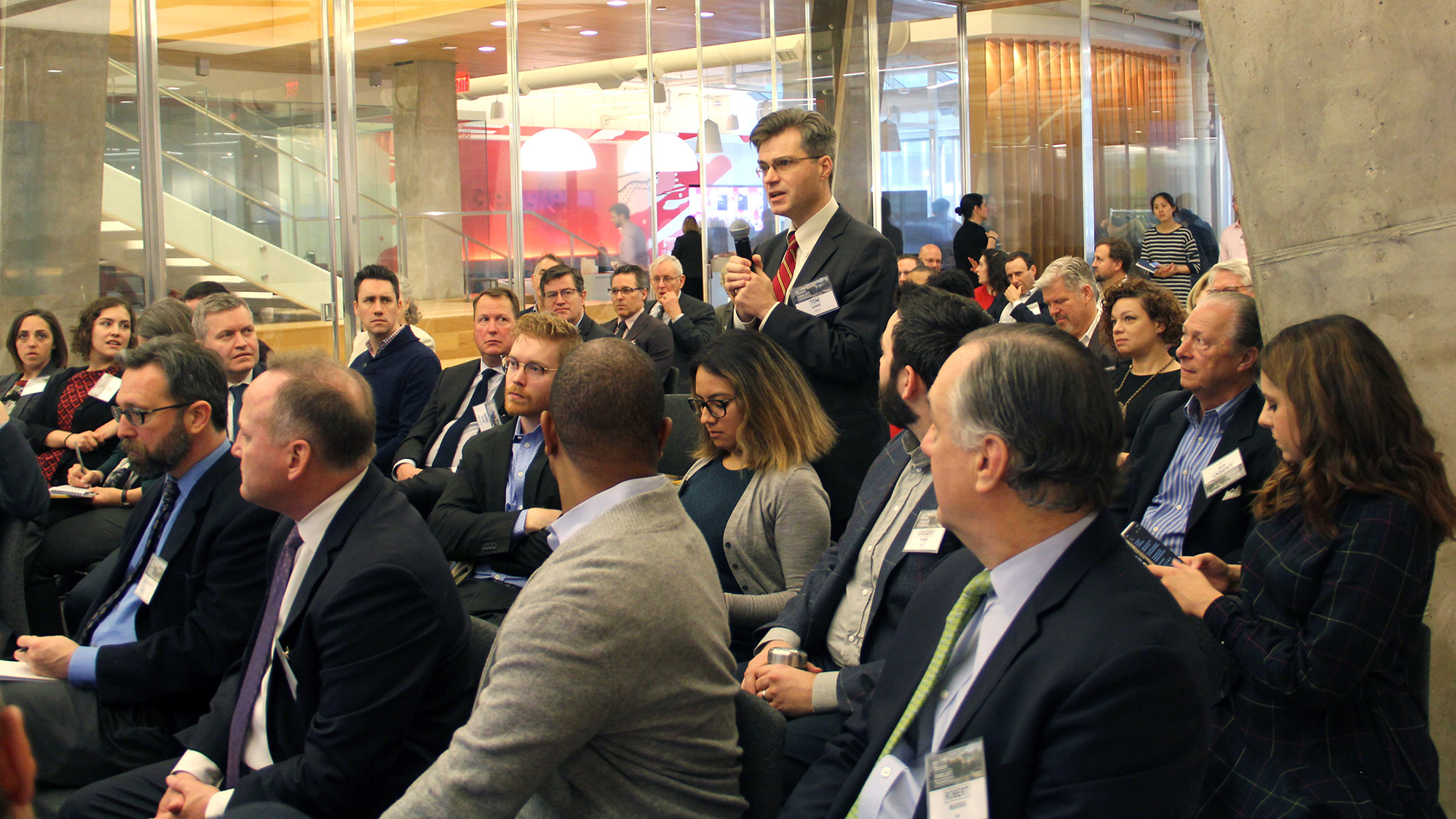
Gidigbi emphasized that smart city design must be people-centric. For a city to truly be smart, its technology must be in service to the people who live and work there. This is true for public-private partnerships (P3), too. She spoke about the importance of the public private people partnerships (“P4”) framework, which puts people at the center. “Oftentimes we plan for people as though they don't know about what they need. And so really thinking about some of the projects that you all might be looking to design and being able to call on residents who can help to inform your projects and make it better.”
We need to reframe resilience as a positive opportunity.
We need to reposition the resilience issue as a positive opportunity for people to come together around making their cities better places to live. “We need to flip that conversation inside out and say, ‘Hey, we're making our city a better place,” Brandes said. “We're including more people in the prosperity of our city. We're doing the right thing. This is going to increase the quality of life for all of us. It's a business opportunity to participate in this effort.”
This conversation really inspired us. With such a diversity of perspectives in the room, it brought us to a new understanding of how much power we have as a region to make a difference. Some of the most important lessons will come from our own backyard, while others will come from experiences we learn about around the globe. And as we move forward, our region’s status as a global resilience leader will in turn guide others as they address resilience challenges. Every city will face both chronic and acute stressors in the coming years, some familiar and some new. But if the public and private sectors come together like this event shows they can, we have a fighting chance.
